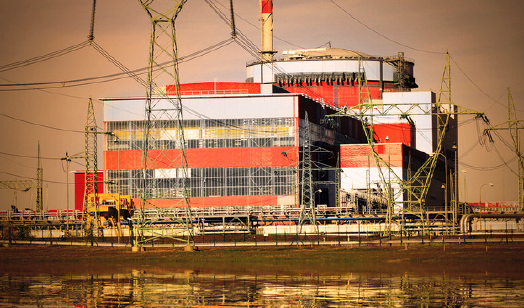
Water, Energy, and Inequality
World Water Day 2014 was observed on 22 March, under the theme 'energy and water'. Special events were sponsored around the world as part of the celebrations. Importantly, the United Nations also released the Water Development Report 2014 on Water and Energy. One of the over-arching messages of the report is that water and energy are interdependent—water requires energy, and energy requires water, and conserving one is conserving the other.
Water-Energy Nexus
In the environmental context, we easily associate water with problems related to its availability and cleanliness, as well as sanitation; while energy brings to mind the question of non-renewable versus renewable energy. But while they are sometimes perceived as separate environmental issues, water and energy are in fact intimately connected. The term 'water-energy nexus' refers to the connection between how much water is used to generate and transmit energy (such as nuclear, hydroelectric, and thermal power), and how much energy is consumed to collect, clean, move, store and discard water.


Water's Energy Footprint
Water supply and sewage disposal consume energy—not as much as the energy sector does water, but more than we may think. About 8% of global energy is used for pumping, treating and transporting water. Potable water must be pumped to treatment plants and properly treated before ending up in our glasses. In regions where fresh water is scarce, water must be brought in from faraway places, thus increasing the energy footprint further. Treatment of wastewater also requires energy, as does heating it.
Energy's Water Footprint
Generally, 'water use' can take two forms—consumption or withdrawal. Water withdrawal is defined as water extracted from a surface or a groundwater source. Water consumption, on the other hand, is water that is no longer available because it has evaporated, or been consumed by people or livestock, or absorbed by plants or crops.
Ninety per cent of the world's power production is water intensive. Some 15% or 583 billion m3 of the world's total water withdrawals is used for energy production every year, second only to agriculture. About 66 billion m3 of that is consumed. Most water used in the energy sector is for cooling, that is, carrying away waste heat, at thermal power plants. It is also used in the extraction, moving and processing of fuels; as well as in irrigation to grow biomass feedstock crops. Water withdrawal by the energy sector is expected to go up by 20% through 2035, while the amount consumed increases by 85%.
World Water Development Report 2014
The WWDR 2014 forecasts that the global population will need 40% more water by 2030, and highlights the threats to water supplies posed by power production, growing demand for food, water contamination, pollution, climate change, undesirable policies, and general wastage. On the other hand, energy demand is projected to grow by more than a third, and demand for electricity, by an enormous 70%, by 2035.
The report also reveals certain alarming inequalities, that, for instance, about a billion people who urgently lack access to clean water sources and improved sanitation also lack access to electricity. It urges policy-makers and stakeholders to be aware of the interlinkages between water and energy, and to seek to formulate better coordinated and concerted policies. The UN will play an instrumental role in providing evidence and guidance.

'China is a vast country with severe water shortage. Per capita water resource is only about one-third of the world average, the highly uneven spatial and temporal distribution of water availability driven by monsoon climate causes frequent flood and drought hazards, and the spatial mismatch of water, land and energy resources introduces great difficulties in water resources development and management. As a rapidly developing economy, China still needs to make enormous efforts to solve its water and energy shortage problems and meanwhile has to face the huge challenge of meeting the ever-growing demands. It is clear that the water and energy problems addressed in WWDR 2014 are particularly severe and challenging in China and joining the international community to pursue for water and energy sustainability will surely be crucial for the long-term socio-economic development of our country.
Hong Kong has been heavily relying on Dongjiang water to meet around 80% of our urban water demand and may need to import more electricity from the mainland in the near future. Therefore, it is important for Hong Kong to look at our water and energy sustainability problems from a regional, national, and global perspective and we, both government and citizens, should make our contribution to overcome those water and energy challenges discussed in the report.'
Prof. David Chen Yongqin, hydrologist and Professor at the Department of Geography and Resource Management, CUHK


